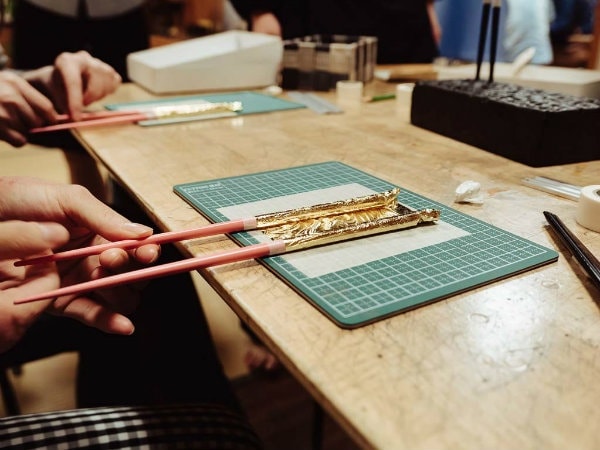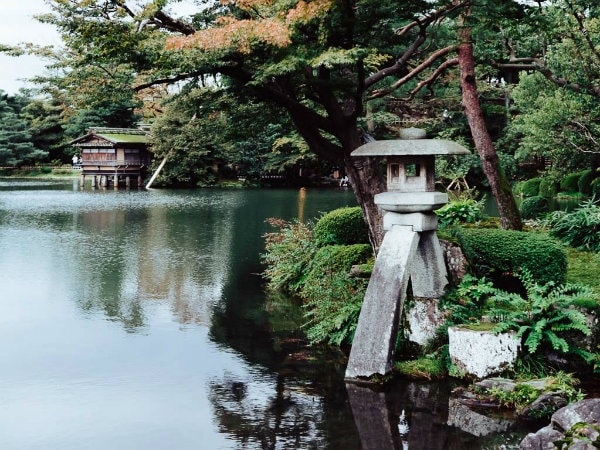An 8-Day Journey Through the 'Rising Dragon'
DAY 3: Sunday
Sakuda Gold & Silver Leaf Crafts (Ishikawa)

http://www.travelpod.com/travel-blog-entries/therobertlewis/1/1477940484/tpod.html
Today we arrived in the Higashiyama area of Kanazawa City in Ishikawa Prefecture, often referred to as “Little Kyoto” due to its history as an entertainment (think geisha) district for samurai in the area and the traditional buildings that still line its cobbled streets.
Our destination, alas, involved no geisha but put our hands to more productive use instead: decorating our own set of chopsticks with gold leaf detailing at the Sakuda Gold & Silver Leaf Crafts workshop. The area has apparently been the center of the nation’s gold leaf production for close to 500 years, gold leaf being an extremely thin (1/10,000 mm) layer of gold that is both flexible and edible (!).
Decorating something yourself is a straightforward and fun process, though for the less artistically inclined visitor there is a selection of pre-made (and certainly better made) items for purchase, including kitchenware, ornaments, hanging artwork and even cosmetics. I suspect King Midas himself never enjoyed a gold-laced face pack.
Kenrokuen (Ishikawa)

Not far away lies Kenrokuen, one of the “three great gardens” of Japan. And the word “great” is not used lightly: its elevation gives a surprisingly clear view of the surrounding city and misty mountains beyond, huge bonsai-like trees stand with wooden struts to support the branches against the weight of snow, visitors can enjoy tea ceremony at a 250-year-old teahouse, and there is Japan’s very first fountain—powered purely by natural water pressure from the Saigawa River. One should definitely set aside a couple of hours to see all its 11 hectares have to offer.



